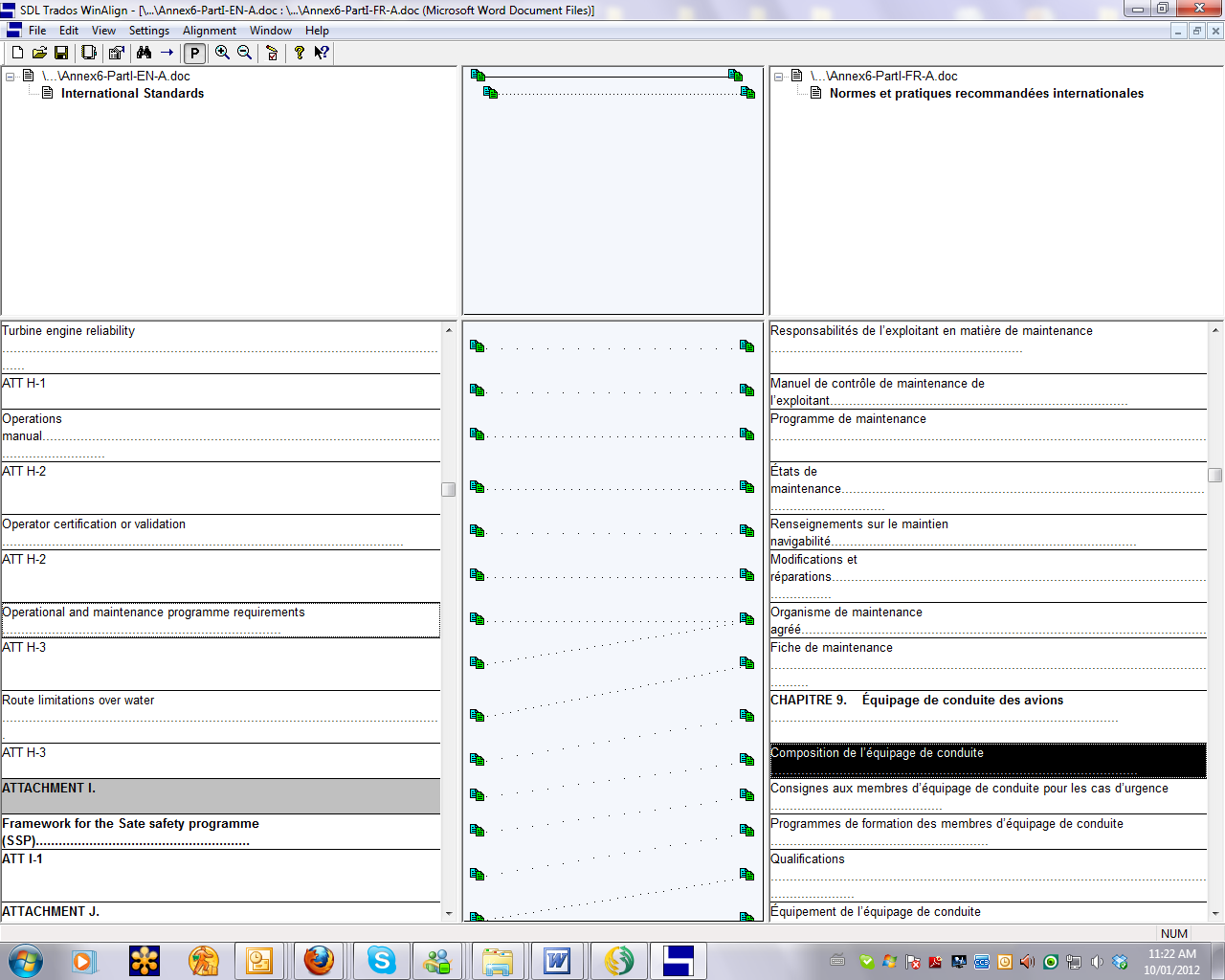Case Study: Incorporating Terminology Management into Highly Technical Aviation Translation Project
Background
A Canadian international agency, specialized in aviation, selected wintranslation™ as its French translation partner to deliver highly technical aviation e-learning courseware consisting of more than 230,000 words.
The Challenge
- The modules that were translated are for aviation regulation purposes, are highly complex, and require very specialized subject area knowledge. It was therefore critically important that the terminology be correct and consistent.
- Significant time had to be allocated for term extraction and research.
- The resulting terminology data had to be easily accessible and retrievable in the translation process. There was some reference material available from the client but they were in PDF format which is time consuming for translators to access since it is read-only and the search function is limited.
- A quality assurance process had to be in place once the terminology was approved to ensure translators followed the approved terminology consistently.
The Solution
Phase 1: Working with source documents to extract key terms
- Converted the source PDF documents into editable format.
- The terminologist identified the core technical terms, terms unique to the client, and other terms that needed to be communicated consistently using the following process:
- Using a term extraction engine to do the initial round of term extraction, 9260 term candidates were extracted.
- Out of the 9260 terms, the majority were considered “noise” and therefore eliminated.
- Reviewed terms with at least 30 occurrences; also included those that were very pertinent but appeared less frequently.
- In the end, 300 terms were documented into a terminology database.
- The terminologist researched the extracted terms using the context provided in the source documents as well as referencing official glossaries from sources such as the Federal Aviation Administration (FAA).
- Selected the data categories to ensure the translators and editors had enough information on the client’s specified terms and language. Common data categories include Part of Speech, Definition, etc.
Below is an example of a term entry:
| English term | airworthiness directive |
| French term | consigne de navigabilité |
| ID | 109 |
| Definition | A regulatory notice sent out by the FAA to the registered owner of an aircraft informing the owner of a condition that prevents the aircraft from continuing to meet its conditions for airworthiness. Airworthiness Directives (AD notes) are to be complied with within the required time limit, and the fact of compliance, the date of compliance, and the method of compliance are recorded in the aircraft’s maintenance records. |
| Definition Source | http://aviationglossary.com/aircraft-terms-definition/airworthiness-directive/ |
| Part of Speech | noun |
| Context | The Minimum Equipment List (MEL) must not deviate from the Aircraft Flight Manual Limitations, Emergency Procedures or with Airworthiness Directives. |
| Context Source |
Phase 2: Working with client-provided reference material to leverage past terminology
After wintranslation submitted the translated terminology database, the client reviewed it. Being a long-term aviation industry expert and employee of the agency, the project manager realized that certain highly relevant reference materials had not been provided to wintranslation. We then arranged to obtain the reference materials in PDF format and:
- Converted PDF files into editable format.
- Aligned translations – we used an alignment process where we paired up the English terms and the French equivalents and created a database based on the pairings.
- The final output was a searchable, electronic bilingual database of original source words and approved translations in French.

Figure 1: Translation alignment of reference material to create a terminology database.
Phase 3: Combining term entries from source documents and reference material
We combined the terms extracted from the source documents with the terms from the reference material and created a set of central terminology entries. The exported data was then sent to the client and went through revision and final approval.
The final approved terminology data was then imported into a project translation memory which was distributed to the translators.
Phase 4: Quality assurance of compliance of terminology usage
Once a client approves the terminology it is still critical to ensure translators use it and do not deviate using their own translations. For this phase we used a quality assurance feature available in the translation software. Subsequently, deviations from the approved term list were corrected through the coordination between the project manager and translators.
The Benefit
- By successfully applying terminology management processes, wintranslation ensured that the client specific terms were researched and documented accurately and consistently.
- Translation cost was reduced by identifying the main key terms and the translation team was able to easily maintain consistency in their translations by using the same terminology list.
- Number of revisions and editors assigned to this project were reduced and kept to a minimum since the main key terms were already correctly utilized by the translators.
- Approved database can be used for future projects, helping the client keep costs low and improve the translation turnaround time.
The technical accuracy of the aviation training manuals were ensured and confirmed through a review by subject area experts from the client. The full 230,000 words were translated and edited in three months and the manuals were delivered by the deadline.
